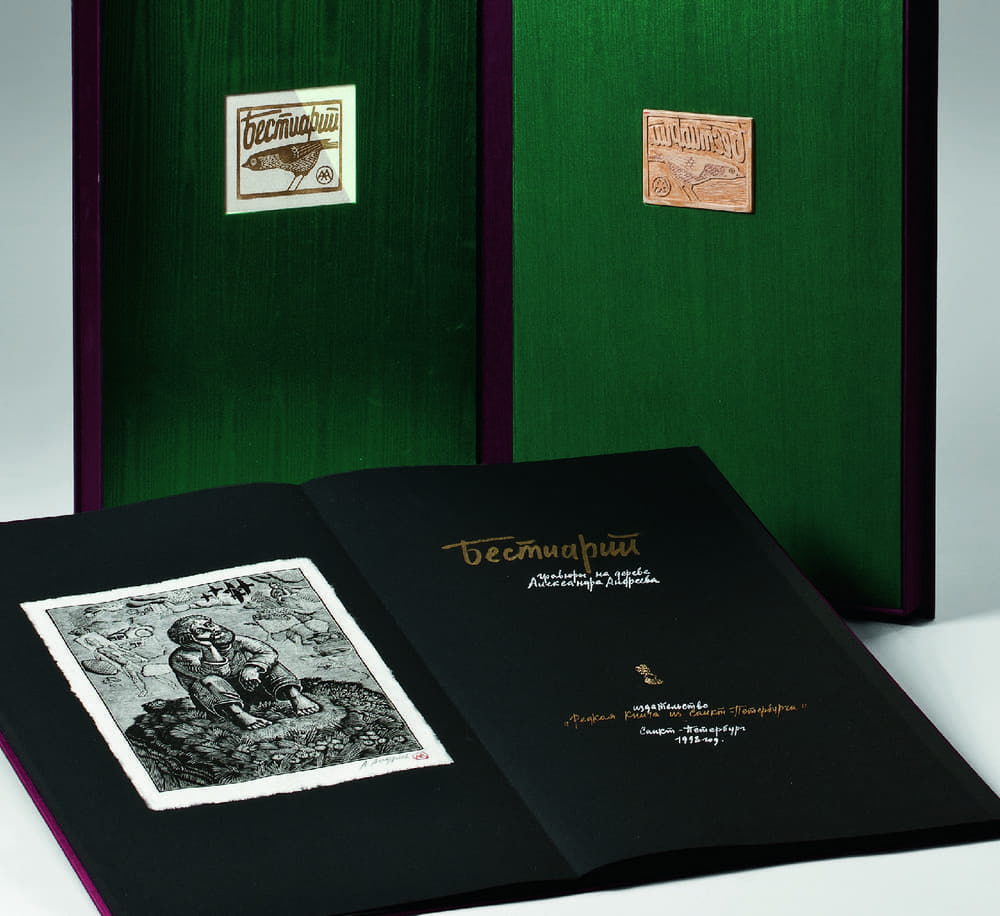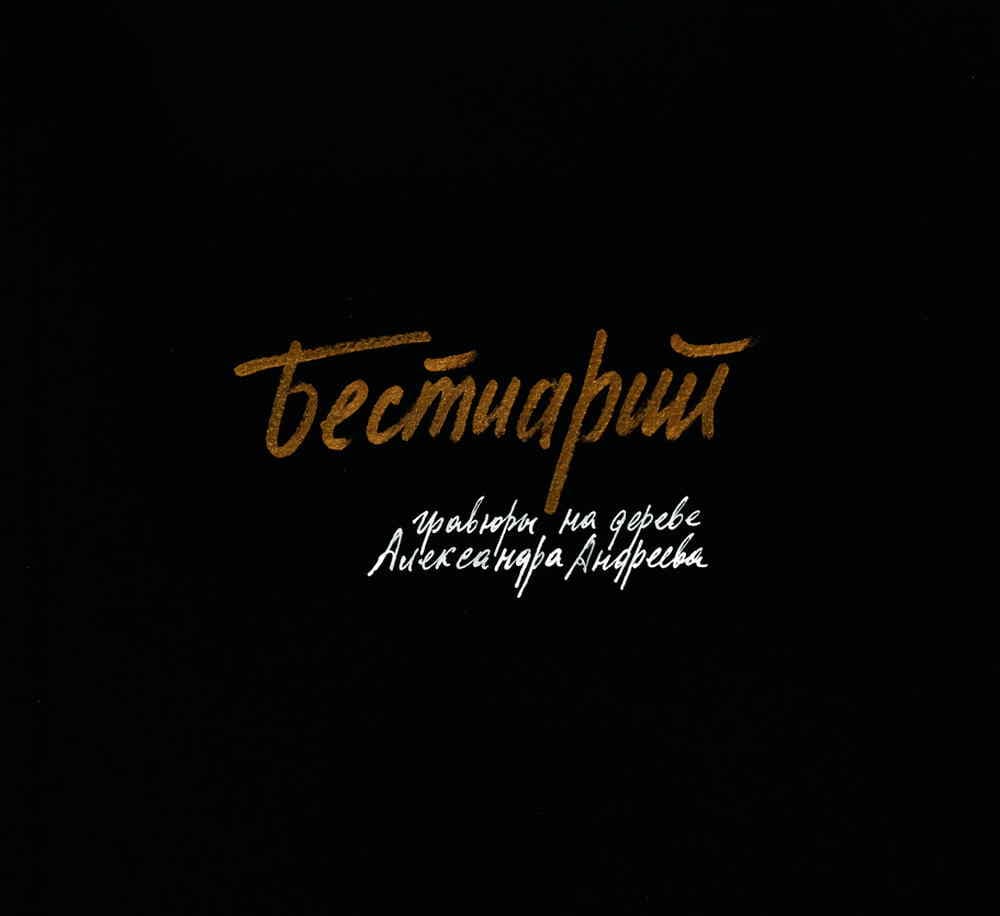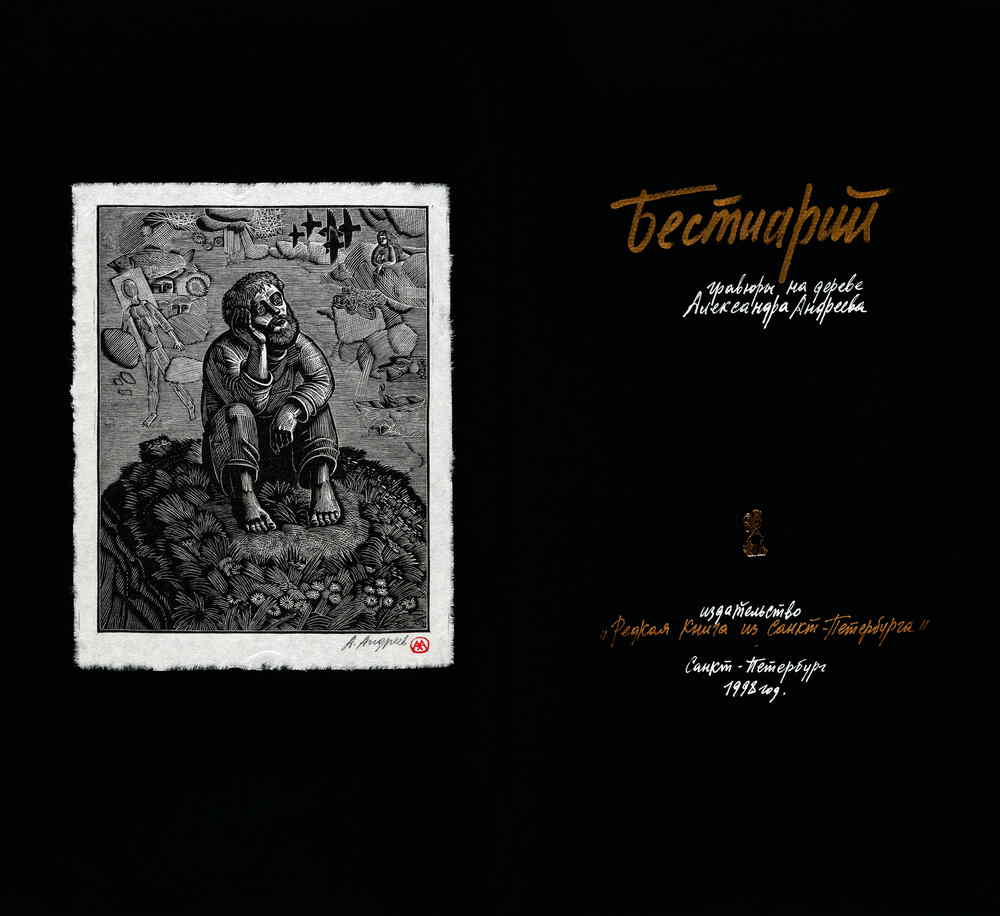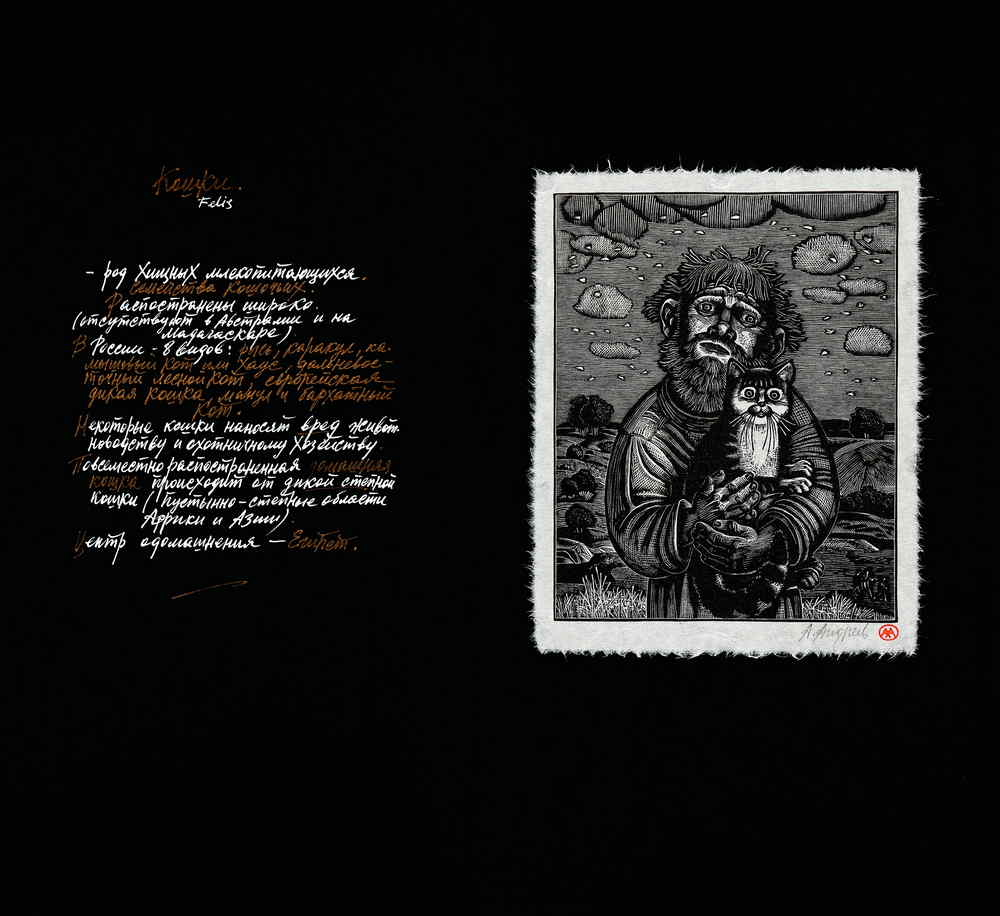BESTIARY
A mediaeval anthology of zoological articles executed in the style of a type of Russian folk art – the humorous, fabulous lubok (popular print). The handwritten text of the amusing tales and comical illustrations are the work of the artist Alexander Andreyev.
Additional information
Details of the creation of this masterpiece
-
Year of publication:1995
-
Number of pages:30 sheets (15 unsewn signatures)
-
Dimensions:sheets — 430 × 250 mm; case — 460 × 270 × 20 mm
-
Paper:Flannel (Sweden), 220 g/m², Wenzhou (China), 230 g/m² (copies 1–5); Canson (France), 180 g/m², Wenzhou (China), 230 g/m² (copies 6–25)
Bestiaries were the first encyclopaedias of the animal world and at the same time the first moral-symbolic writings in which each animal was regarded both as a living creature and as an allegory of human virtues and vices. In them, scholarly information about the world’s fauna was interlaced with pre-Christian myths, folk beliefs and legends.

Participants in the work on this publication:
Creator of the illustrations, design of the case, layout, handwritten texts, printing of the xylographs — Alexander Andreyev
Binding work — Alexander Borsuk (copies 1, 2), Andrei Degtev and Konstantin Svetlov (copies 3–25)

The artist wrote these texts out by hand, which invests Alexander Andreyev’s Bestiary with the uniqueness of improvisation and stylistic completeness.
The subjects of the illustrations, which the artist Alexander Andreyev created in the woodcut technique that was also typical for early European popular prints, continue the traditions of the 18th-century Moscow lubok and also of comic prints with captions in the form of brief stories or fairy tales that were widely sold in days gone by.
The front cover of each incorporates an original limewood block used to print one of the woodcuts including the title of the book.
Additional information
Details of the creation of this masterpiece
-
Year of publication:1995
-
Number of pages:30 sheets (15 unsewn signatures)
-
Dimensions:sheets — 430 × 250 mm; case — 460 × 270 × 20 mm
-
Paper:Flannel (Sweden), 220 g/m², Wenzhou (China), 230 g/m² (copies 1–5); Canson (France), 180 g/m², Wenzhou (China), 230 g/m² (copies 6–25)
Bestiaries were the first encyclopaedias of the animal world and at the same time the first moral-symbolic writings in which each animal was regarded both as a living creature and as an allegory of human virtues and vices. In them, scholarly information about the world’s fauna was interlaced with pre-Christian myths, folk beliefs and legends.

Participants in the work on this publication:
Creator of the illustrations, design of the case, layout, handwritten texts, printing of the xylographs — Alexander Andreyev
Binding work — Alexander Borsuk (copies 1, 2), Andrei Degtev and Konstantin Svetlov (copies 3–25)

The artist wrote these texts out by hand, which invests Alexander Andreyev’s Bestiary with the uniqueness of improvisation and stylistic completeness.
The subjects of the illustrations, which the artist Alexander Andreyev created in the woodcut technique that was also typical for early European popular prints, continue the traditions of the 18th-century Moscow lubok and also of comic prints with captions in the form of brief stories or fairy tales that were widely sold in days gone by.
The front cover of each incorporates an original limewood block used to print one of the woodcuts including the title of the book.
BESTIARY
A mediaeval anthology of zoological articles executed in the style of a type of Russian folk art









